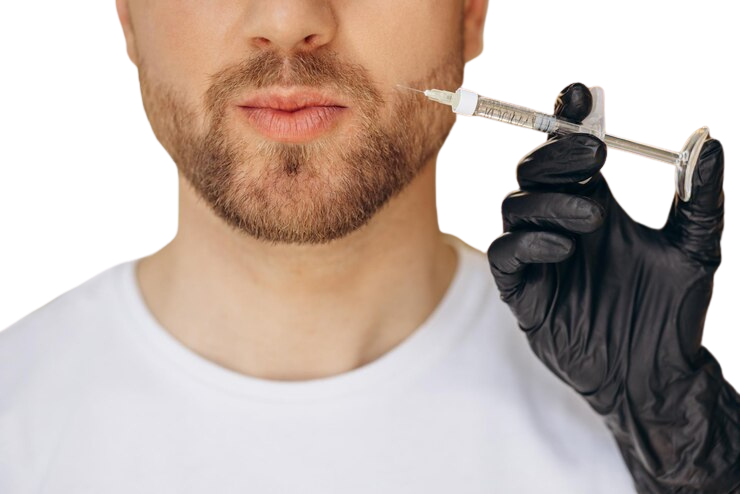Hair transplantation

Hair loss can happen because of different reasons like getting older, hormones, or family history. We have different methods to help improve your hair, depending on how much you’ve lost.
In your first meeting with Dr. Vikesh , he’ll check your head and scalp to see what’s best for you. He’ll suggest a hair transplant method that fits what you want. The aim is to use your existing hair to fill in the areas where you’re losing hair.
Hair Transplant Techniques

Follicular Unit Extraction
The follicular unit extraction (FUE) method is another way to take individual hair follicles for transplanting. Like FUT, it can make your bald or thinning areas look natural.
Here’s how it works: the back of your head and sometimes above your ears are shaved. Each hair follicle is taken out using a small handheld tool that removes grafts with a diameter of 1mm. The sites where the hair is taken from are hidden once the hair grows back.
During the procedure, the surgeon creates the hairline and makes tiny incisions for the grafts. Then, the grafts are placed into these incisions. Single hairs go in the front for a natural hairline, and larger grafts go behind for more thickness.
This method doesn’t need stitches or clips, but fewer hairs can be moved at once compared to the strip method.
Most of these procedures are done as outpatient surgeries with local anesthesia.
Follicular Unit Transplantation
The “strip” or FUT (follicular unit transplantation) method is often used to take hair from the back of the head for transplanting. This surgery can make your bald or thinning areas look natural by filling them in with hair. It’s good for people who have a lot of bald spots and need many hair grafts at once.
Here’s how it works: first, the hair at the back of your head is cut short, but the surrounding hair isn’t touched. Then, a section of scalp is carefully removed, and the wound is closed with stitches or clips. The removed scalp is divided into smaller sections, and the hair grafts are separated under magnifying lenses. At the same time, our surgeon creates the hairline and places tiny incisions where the grafts will go. The grafts, each containing one to four hairs, are then placed into these incisions using microforceps. Single hairs are put in the front for a natural hairline, and larger grafts are placed behind for more density.
Most of these procedures are done as outpatient surgeries with local anesthesia.


Facial Hair Transplantation (Beard Hair transplantation)
The follicular unit extraction (FUE) method is another way to take individual hair follicles for transplanting. Like FUT, it can make your bald or thinning areas look natural.
Here’s how it works: the back of your head and sometimes above your ears are shaved. Each hair follicle is taken out using a small handheld tool that removes grafts with a diameter of 1mm. The sites where the hair is taken from are hidden once the hair grows back.
During the procedure, the surgeon creates the hairline and makes tiny incisions for the grafts. Then, the grafts are placed into these incisions. Single hairs go in the front for a natural hairline, and larger grafts go behind for more thickness.
This method doesn’t need stitches or clips, but fewer hairs can be moved at once compared to the strip method.
Most of these procedures are done as outpatient surgeries with local anesthesia.
Eyebrow Hair Transplantation
Both men and women can benefit from eyebrow hair transplant surgery, which helps replace missing eyebrow hairs. Hair loss in the eyebrows can be due to genetics, aging, or trauma like over-plucking. During the procedure, hair is taken from the back of the scalp and transplanted one by one into the eyebrow area.
Our surgeon will design your eyebrows according to your goals and preferences. They’ll make sure each hair lies flat against the brow bone and grows in the right direction. It might take about 400 or more single hair grafts to fully replace one eyebrow.
The donor hair is harvested under local anesthesia, either by strip harvesting (FUT) or follicular unit extraction (FUE). Since the hair is taken from the scalp, it will grow like scalp hair and need trimming once or twice a week.

Ideal Candidates
Whether male or female, in order to qualify as an ideal candidate for hair transplant surgery, you must have healthy hair growth at both the back and sides of the head. These will serve as donor areas (places on the head where grafts are taken). Some of the other factors that will be taken into consideration include hair color and texture, such as waviness or curliness. These may affect the overall aesthetic result.
Cost
If your hair loss was caused by burns or trauma, then hair transplant surgery is regarded as a reconstructive treatment and may be covered by health insurance. Should you desire this procedure for cosmetic reasons, the overall cost will be based on several factors, including:
- Price per hair graft
- Surgeon’s fee
- Operating room fees
- Anesthesia fees
- Medical tests
- Region or demographics
- Prescriptions for medication
- Post-surgical garments
Recovery
It is common to experience some mild discomfort and tenderness over the scalp after hair transplantation surgery, which can be alleviated with prescribed medication if necessary. Any wigs or hairpieces should not be worn for at least the first two weeks after surgery. There are multiple factors that will affect how quickly you are able to go back to your regular routine, such as the length, complexity, and type of hair replacement surgery you underwent as well as the type of work you do. It may take several days before returning to work and resuming normal, light activities. If stitches or surgical clips are used, they are removed nine to 10 days after surgery.
Because it could take several weeks for the grafts to become firmly anchored to the scalp, you must be extra careful while grooming your hair. The hair can be rinsed gently with water on the first postoperative day. Gentle daily shampooing can usually begin three days after the procedure, and for the first few weeks, only a very mild, non-medicated shampoo should be used.
Potential Risks and Complications
When performed in the hands of a qualified specialist, complications are rare. However, every type of surgery has its own set of potential risks.
Just like any surgical procedure, there is always the risk of infection, and therefore, antibiotics are prescribed. Particularly with hair transplant surgery, excessive bleeding, a widened scar (“stretch-back” scars), and the chance that some of the grafts won’t “take” are possibilities. The surgeon will discuss this in detail during your individualized consultation. It is normal for the hair contained within the grafts to initially fall out before establishing regrowth in its new location over the following three to four months. Additional surgery may also be needed if your hair loss progresses after the initial procedure, resulting in an unnatural “patchy” look. Hair will camouflage any small bumps that may develop on the scalp at the transplant sites. Every individual is different, so physical reactions and healing abilities are unique and cannot be predicted.
Results of Hair Transplantation
Hair transplant surgery offers a successful outcome, but it will take time to see the full results.
Within the first several weeks after surgery, many of the transplanted hairs will fall out — a process that normally follows this type of procedure. After the hair falls, it typically begins to regrow after three to four months have passed. You may anticipate about a half-inch of growth per month thereafter.
Depending on the degree of hair loss, in order to achieve optimal, natural-looking results, additional surgery be required. Healing between surgeries usually takes several months. During the consultation, one of our surgeons discuss the details of any potential follow-up procedures.
Working Hours
Don’t settle for anything less than perfection when it comes to your appearance. Trust Dr Vikesh to enhance your natural beauty and boost your confidence like never before.
- Mon - Sat : 11.00 AM - 07.00 PM
